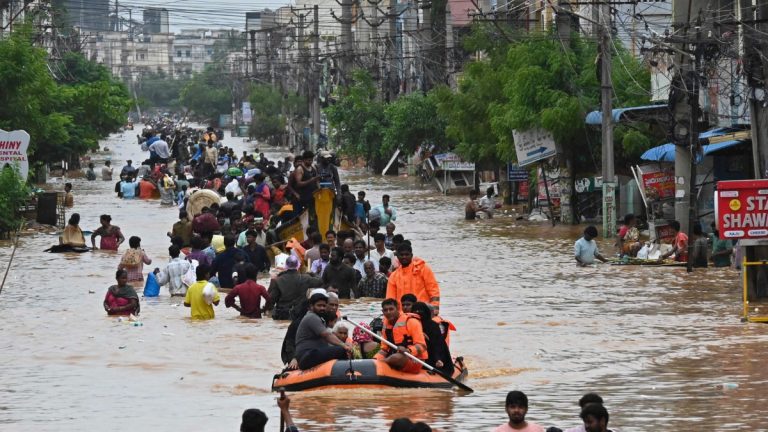
On September 3, in Vijayawada, the commercial capital of Andhra Pradesh, stranded residents waded through flooded roads to safety after heavy rain.
The seasonal rainfall excess is over 42% in coastal Andhra Pradesh, over 44% in Rayalaseema and over 38% in Telangana. Considerable widespread rainfall is forecast until 8 September.
After catastrophic floods in Gujarat, the southwest monsoon became strong in the south, causing flooding in parts of Telangana and Andhra Pradesh. With the intensity of the current rainfall subsiding after Thursday, the Meteorological Department has issued an alert for another weather system brewing over the Bay of Bengal.
A low pressure system (the main rainfall system of the monsoon) is likely to form around September 5 in the central and western parts of the country and adjacent to the northwestern Bay of Bengal. The entire area will be affected by rainfall.
The monsoon has continued to bring rain to India since it arrived in Kerala on May 30. Amounts are above normal – higher than the Bureau of Meteorology's forecast. IMD chief Dr M Mohapatra attributed this to multiple low pressure systems keeping the monsoon active.
As the monsoon draws to a close, the department expects continuous systems to form almost every week in September, bringing above-normal rainfall. So far, the southern peninsula has received an excess of rainfall from June to August – as of September 4, it was almost 26% excess.
So far, all districts in south India have received excess rainfall in reservoirs, including Tamil Nadu (58%), Andhra Pradesh (42%), Telangana (38%) and Rayalaseema (44%) topped the list. As of August 30, Andhra Pradesh, Telangana, Andhra Pradesh and Telangana (2 combined projects in two states), Karnataka, Karnataka The water storage capacity in as many as 43 reservoirs in Larnaca and Tamil Nadu remains higher than last year.
The monsoon trough remains active. This week, much of India is experiencing active monsoon, from Gujarat, Madhya Pradesh and Chhattisgarh to Madhya Maharashtra, as well as Uttar Pradesh, Rajasthan and Bihar. Widespread rainfall. A cyclonic circulation also persists over Assam and Haryana, bringing rainfall.
As of September 5, the monsoon in India was nearly 8% above normal, with 17 divisions receiving normal rainfall and the other 13 divisions receiving excessive rainfall. This deficit exists only in four meteorological divisions – Arunachal Pradesh (-20%), Punjab (-22%), Himachal Pradesh (-20%) and Bihar (-27%) .
The four-month monsoon ends in September, with the southwest monsoon usually starting to retreat from Bikaner in the western tip of Rajasthan on September 17 and exiting completely on October 15. May be delayed. IMD predicts that India's monsoon in September this year will be above normal, exceeding 109% of the long-term average (LPA).
